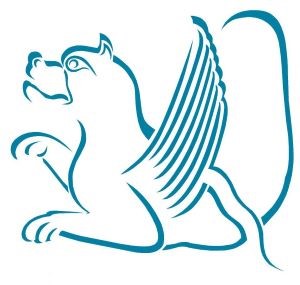#smrgDERGİ The Atlantic Alliance Transformed - Volume: XIV August

Contents
About The Authors
Acknowledgments
Introduction
Why Nato?
An Agent For Stability
NATO's Relative Advantages
From Common Defense To Crisis Management
NATO's Political Function
Promoting Harmony, Avoiding Hegemony
Crisis Management
Promoting Stability In Eastern And Central Europe
The U. S. Contribution
NATO'S Military Roles
Traditional Roles
Military Counterbalance
Defense Resources Strategy
New Roles
Building An East - West Defense Community
Monitoring Arms Control
Ballistic Missile Defense
Crisi Response
Crisis Response Missions For NATO
Defense Against Threats From The South
Internal Instabilities
Interstate Wars
Broader Securit Guarantees
An Out - Of Area Operation: The Middle East
U. S. Forces In Europe
Budget Pressures
U. S. Units Under Foreign Command
A Lean But Substantial Presence At 100,000
A Strategy For U. S. Deployments In Europe
NATO's Third Dimension
Europe's Institutional Memory
Appendix A: Residual U. S. Military Forces In Europe
By Don M. Snider
The Current Debate: Summer 1992
Use OF Military Forces For Forward Presence
Forward Presence In Europe
Force Levels And Their Implications
The Current, Preffered 150,000 Force Level
The Threshold 120,000 Force Level
A Future Force Level Of 75,000
Appendix B: NATO Armaments Cooperation: Stalled At A Crossroads By Robin Niblett
The Rationale For Cooperation
Obstacles To Progress
Recommendations For Strenghthening The Partnership
Appendix C: Key NATO Documents, 1991 - 1992
Statement Issued At The Meeting Of The North Atlantic Cooperation Council, Oslo, Norway, 5th June 1992
Final Communique From The Ministerial Meeting Of The North Atlantic Council, Oslo, Norway, 4th June 1992
Final Communique (From The Meeting Of The Defence Planning Committee And The Nuclear Planning Group), 27th May 1992
North Atlantic Cooperation Council Statement On Dialogue, Partnership And Cooperation, 20th December 1991
Rome Declaration On Peace And Cooperation Issued In The Meeting Of The North Atlantic Council In Rome, 7th - 8th November 1991
The Alliance's New Strategic Concept Agreed By The Heads Of State And Government Participating In The Meeting Of The North Atlantic Council, Rome, 7th - 8th November 1991
Contents
About The Authors
Acknowledgments
Introduction
Why Nato?
An Agent For Stability
NATO's Relative Advantages
From Common Defense To Crisis Management
NATO's Political Function
Promoting Harmony, Avoiding Hegemony
Crisis Management
Promoting Stability In Eastern And Central Europe
The U. S. Contribution
NATO'S Military Roles
Traditional Roles
Military Counterbalance
Defense Resources Strategy
New Roles
Building An East - West Defense Community
Monitoring Arms Control
Ballistic Missile Defense
Crisi Response
Crisis Response Missions For NATO
Defense Against Threats From The South
Internal Instabilities
Interstate Wars
Broader Securit Guarantees
An Out - Of Area Operation: The Middle East
U. S. Forces In Europe
Budget Pressures
U. S. Units Under Foreign Command
A Lean But Substantial Presence At 100,000
A Strategy For U. S. Deployments In Europe
NATO's Third Dimension
Europe's Institutional Memory
Appendix A: Residual U. S. Military Forces In Europe
By Don M. Snider
The Current Debate: Summer 1992
Use OF Military Forces For Forward Presence
Forward Presence In Europe
Force Levels And Their Implications
The Current, Preffered 150,000 Force Level
The Threshold 120,000 Force Level
A Future Force Level Of 75,000
Appendix B: NATO Armaments Cooperation: Stalled At A Crossroads By Robin Niblett
The Rationale For Cooperation
Obstacles To Progress
Recommendations For Strenghthening The Partnership
Appendix C: Key NATO Documents, 1991 - 1992
Statement Issued At The Meeting Of The North Atlantic Cooperation Council, Oslo, Norway, 5th June 1992
Final Communique From The Ministerial Meeting Of The North Atlantic Council, Oslo, Norway, 4th June 1992
Final Communique (From The Meeting Of The Defence Planning Committee And The Nuclear Planning Group), 27th May 1992
North Atlantic Cooperation Council Statement On Dialogue, Partnership And Cooperation, 20th December 1991
Rome Declaration On Peace And Cooperation Issued In The Meeting Of The North Atlantic Council In Rome, 7th - 8th November 1991
The Alliance's New Strategic Concept Agreed By The Heads Of State And Government Participating In The Meeting Of The North Atlantic Council, Rome, 7th - 8th November 1991











